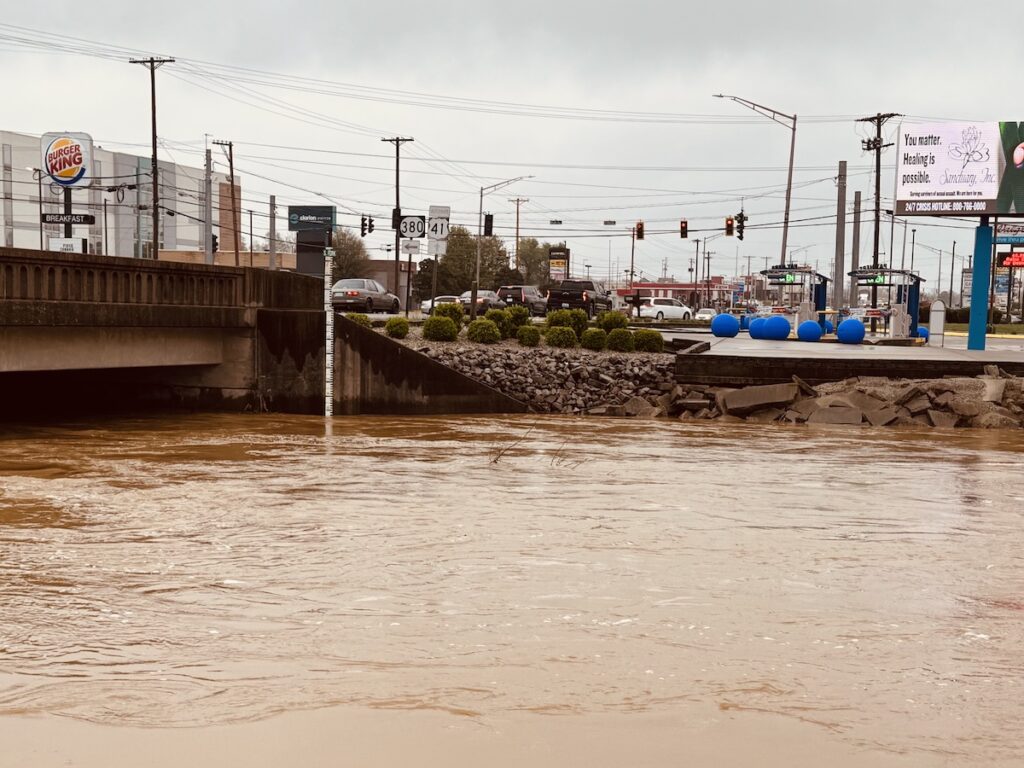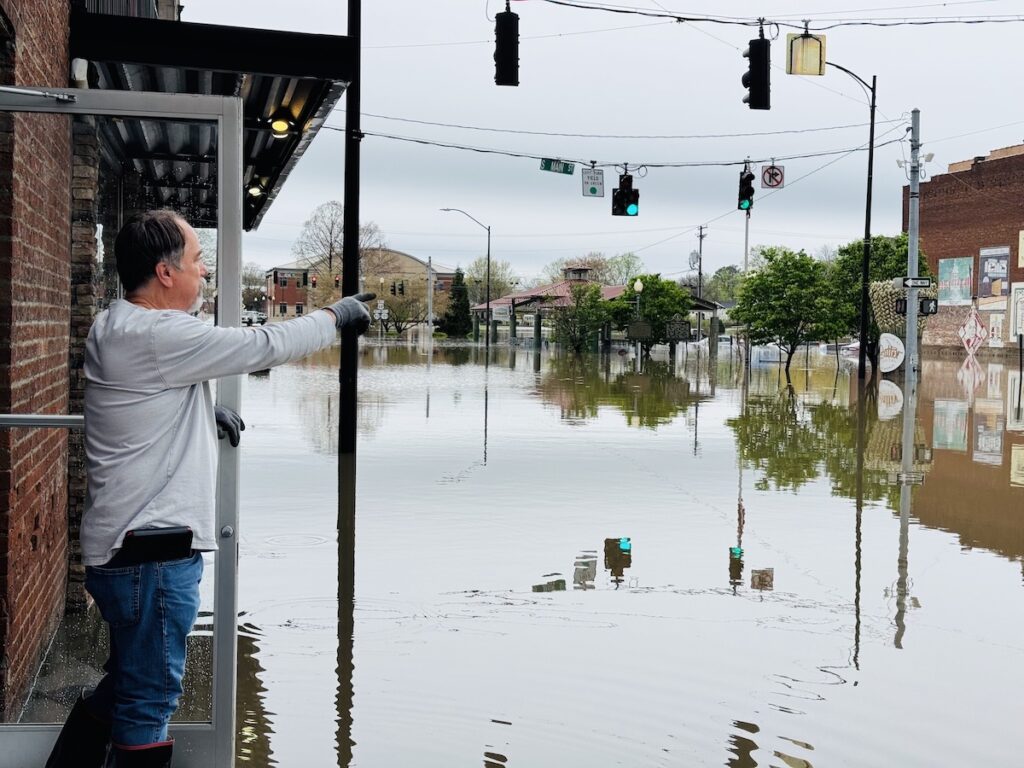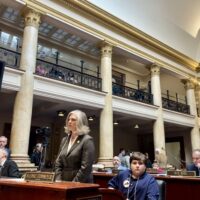In early December 1978, a Kentucky New Era reporter began a story with this question: “How does Friday’s flood compare with the ‘legendary’ floods of 1937, 1957 and 1975[?]”
The exact same question makes sense today — even down to the day of the week, Friday. How does the flooding we’ve seen in Hopkinsville this time — following slightly more than 14 inches of rain in the last four days — compare to other big storms in our town’s history?
As more rain poured down and thunder rolled last night, I started looking through old news stories for some perspective. It will take a few more days to get a full picture of this flood and the cost of damages to homes, businesses and farms, but there is no doubt this one falls in the category of historic.

My first source for old flood data was a Joe Dorris column in the New Era. If you didn’t know, Dorris was a sports writer, editor, columnist, and for a brief time publisher, at the Hopkinsville newspaper.
In his daily “Watching the Parade” column that ran for decades, Dorris took the pulse of the community and commented on trends, oddities and unique aspects of life in Hopkinsville. He was like community glue, spinning tales about local history and illuminating the lives of Hopkinsville people young and old.
Dorris’ column anchored the opinion page — and regardless of what was on the front page, many subscribers went straight to “Watching the Parade” first thing every evening.

In a column Dorris wrote for the Dec. 12, 1972, newspaper, he shared these details about Hopkinsville’s biggest floods:
- At least eight times in the first six decades of the 1900s, boats were needed to get up Ninth Street after the North Fork of Little River overflowed its banks.
- Areas of downtown flooded in November 1900, November 1906, January 1913 and in 1919 and 1926.
- The “Great Flood of ’37,” as Dorris and others called it, occurred when 20 inches of rain fell in Hopkinsville, including 7.24 inches on Jan. 20 and 21. The “spout was really turned on,” the New Era columnist wrote, and the town was cut off by highway for days. At least 40 families were evacuated from homes. Water stood in some South Christian fields until that summer.
- Then at least 75 families were evacuated from homes in the Valentine’s Day flood of 1949.
- The November 1957 flood, caused by 9.5 inches of rain in five days, was blamed for an estimated $2 million in damages.
- The floods of 1937 and 1957 were factors in the reconstruction of two existing watershed lakes, Tandy and Morris, and the construction of two new lakes, Blythe and Boxley, in the 1960s.
Dorris also wrote, “Old-timers used to make their comparison by how far the water rose on Ninth Street. In both 1906 and 1913, the water backed all the way to the corner of Ninth and Liberty, but in the 1949 and 1957 wet spells the water got no farther up Ninth that the old Princess Theater [halfway between South Main and South Virginia streets]. Even these comparisons are misleading. Ninth Street was higher at the time of the later floods than in 1906 and 1913. [The street] was raised when it was first paved, and later surfacing also added inches to the elevation.”

Other huge floods in Hopkinsville occurred in 1997 and 2005. Both were factors in city council’s decision in late 2005 to establish the Hopkinsville Surface and Stormwater Utility to minimize surface and river flooding in the city.
- MORE PHOTOS: Hoptown Chronicle photos of local flooding
I’ve always been an observer (usually in the role of news reporting or by helping a friend tote boxes out of a house) and never a victim of flooding. As I watched business owners sand-bagging their storefront entrances Friday morning on Main Street, I was reminded how difficult a flood is for people whose homes and livelihoods are affected by Little River overflowing its banks.
Hopkinsville remains under a flood warning until late this evening, but Monday’s forecast is the break we’ve needed. It’ll be “mostly sunny,” says the National Weather Service.
Jennifer P. Brown is co-founder, publisher and editor of Hoptown Chronicle. You can reach her at editor@hoptownchronicle.org. Brown was a reporter and editor at the Kentucky New Era, where she worked for 30 years. She is a co-chair of the national advisory board to the Institute for Rural Journalism and Community Issues, governing board past president for the Kentucky Historical Society, and co-founder of the Kentucky Open Government Coalition. She serves on the Hopkinsville History Foundation's board.





